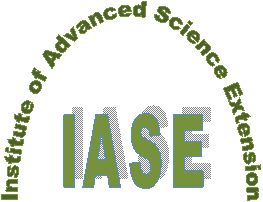International
ADVANCED AND APPLIED SCIENCES
EISSN: 2313-3724, Print ISSN: 2313-626X
Frequency: 12
![]()
Volume 9, Issue 12 (December 2022), Pages: 53-56
----------------------------------------------
Technical Note
Detection of COVID-19 in diagnostic tests carried out on patients
Author(s): Milagros Vicuña-Ramirez *, Humberto Cadenas-Correa, Rosario Garay-Quispe, Angella Bautista-Galindo, Carolina Cucho-Espinoza
Affiliation(s):
Clinical Pathology, Universidad Nacional Mayor de San Marcos, Lima, Perú
* Corresponding Author.
 Corresponding author's ORCID profile: https://orcid.org/0000-0002-8106-3016
Corresponding author's ORCID profile: https://orcid.org/0000-0002-8106-3016
Digital Object Identifier:
https://doi.org/10.21833/ijaas.2022.12.007
Abstract:
Diagnostic tests to detect the coronavirus allow the identification of the virus in addition to the antibodies generated by the body of the person who has previously been infected, so the objective of the research is to detect COVID-19 in diagnostic tests carried out in patients. It is a quantitative, descriptive experimental cross-sectional study, which was carried out with a total population of 560 patients from hospital centers. In its results, we observed that 83.4% (n=467) of patients were non-reactive to the Antigen Test and 66.8% (n=374) of patients were negative in the PCR test. In conclusion, the strengths of the COVID-19 detection tests should be complemented since it allows for an accurate and timely diagnosis of patients.
© 2022 The Authors. Published by IASE.
This is an
Keywords: Public health, Coronavirus, Pandemic, Diagnosis, Diagnostic errors, Patients
Article History: Received 6 May 2022, Received in revised form 17 August 2022, Accepted 19 August 2022
Acknowledgment
No Acknowledgment.
Compliance with ethical standards
Conflict of interest: The author(s) declared no potential conflicts of interest with respect to the research, authorship, and/or publication of this article.
Citation:
Vicuña-Ramirez M, Cadenas-Correa H, Garay-Quispe R, Bautista-Galindo A, and Cucho-Espinoza C (2022). Detection of COVID-19 in diagnostic tests carried out on patients. International Journal of Advanced and Applied Sciences, 9(12): 53-56
Figures
Tables
----------------------------------------------
References (17)
- Adebisi YA, Oke GI, Ademola PS, Chinemelum IG, Ogunkola IO, and Lucero-Prisno III DE (2020). SARS-CoV-2 diagnostic testing in Africa: Needs and challenges. The Pan African Medical Journal, 35(Suppl 2): 4-5. https://doi.org/10.11604/pamj.2020.35.4.22703 [Google Scholar]
- Aguilar Ramírez P, Enriquez Valencia Y, Quiroz Carrillo C, Valencia Ayala E, de León Delgado J, and Pareja Cruz A (2020). Pruebas diagnósticas para la COVID-19: La importancia del antes y el después. Horizonte Médico (Lima), 20(2): e1231. https://doi.org/10.24265/horizmed.2020.v20n2.14 [Google Scholar]
- Biswas GC, Choudhury S, Rabbani MM, and Das J (2022). A review on potential electrochemical point-of-care tests targeting pandemic infectious disease detection: COVID-19 as a reference. Chemosensors, 10(7): 269. https://doi.org/10.3390/chemosensors10070269 [Google Scholar]
- ECDC (2020). Options for the use of rapid antigen tests for COVID-19 in the EU/EEA and the UK. Technical Report, European Centre for Disease Prevention and Control, Solna, Sweden. [Google Scholar]
- Elli S, Blasi F, Brignolo B, Ceriotti F, Gori A, Piatti A, and Costantino G (2022). Diagnostic accuracy of rapid antigen test for COVID-19 in an emergency department. Diagnostic Microbiology and Infectious Disease, 102(4): 115635. https://doi.org/10.1016/j.diagmicrobio.2022.115635 [Google Scholar] PMid:35216863 PMCid:PMC8761115
- Filchakova O, Dossym D, Ilyas A, Kuanysheva T, Abdizhamil A, and Bukasov R (2022). Review of COVID-19 testing and diagnostic methods. Talanta, 244(1): 123409. https://doi.org/10.1016/j.talanta.2022.123409 [Google Scholar] PMid:35390680 PMCid:PMC8970625
- Fragkou PC, De Angelis G, Menchinelli G, Can F, Garcia F, Morfin-Sherpa F, and Skevaki C (2022). ESCMID COVID-19 guidelines: Diagnostic testing for SARS-CoV-2. Clinical Microbiology and Infection, 28(6): 812-822. https://doi.org/10.1016/j.cmi.2022.02.011 [Google Scholar] PMid:35218978 PMCid:PMC8863949
- Ogbebor O, Min Z, Cheema T, and Bhanot N (2020). COVID-19: Diagnostic testing and challenges. Critical Care Nursing Quarterly, 43(4): 343-348. https://doi.org/10.1097/CNQ.0000000000000320 [Google Scholar] PMid:32833771
- Parikh BA, Bailey TC, Lyons PG, and Anderson NW (2020). The brief case: “Not positive” or “not sure”-COVID-19-negative results in a symptomatic patient. Journal of Clinical Microbiology, 58(8): e01195-20. https://doi.org/10.1128/JCM.01195-20 [Google Scholar] PMid:32703891 PMCid:PMC7383542
- Patterson GE, McIntyre KM, Clough HE, and Rushton J (2021). Societal impacts of pandemics: Comparing COVID-19 with history to focus our response. Frontiers in Public Health, 9: 630449. https://doi.org/10.3389/fpubh.2021.630449 [Google Scholar] PMid:33912529 PMCid:PMC8072022
- Peeling RW, Heymann DL, Teo YY, and Garcia PJ (2021). Diagnostics for COVID-19: Moving from pandemic response to control. The Lancet, 399(10326): 757–768. https://doi.org/10.1016/S0140-6736(21)02346-1 [Google Scholar]
- Sampieri HR, Fernández Collado C, and Baptista Lucio P (2014). Metodología de la investigación. 6th Edition, Editorial McGraw-Hill, Mexico City, México. [Google Scholar]
- Sarwar S, Shahzad F, Vajeeha A, Munir R, Yaqoob A, Naeem A, and Gull S (2022). Assessment of biosafety implementation in clinical diagnostic laboratories in Pakistan during the COVID-19 pandemic. Journal of Biosafety and Biosecurity, 4(1): 43-49. https://doi.org/10.1016/j.jobb.2022.01.001 [Google Scholar] PMid:35072000 PMCid:PMC8768056
- Tang EW, Bobenchik AM, and Lu S (2020). Testing for SARS-CoV-2 (COVID-19): A general review. Rhode Island Medical Journal, 103(8): 20-23. [Google Scholar]
- West CP, Montori VM, and Sampathkumar P (2020). COVID-19 testing: The threat of false-negative results. Mayo Clinic Proceedings, 95(6): 1127-1129. https://doi.org/10.1016/j.mayocp.2020.04.004 [Google Scholar] PMid:32376102 PMCid:PMC7151274
- Woloshin S, Patel N, and Kesselheim AS (2020). False negative tests for SARS-CoV-2 infection—Challenges and implications. New England Journal of Medicine, 383(6): e38. https://doi.org/10.1056/NEJMp2015897 [Google Scholar] PMid:32502334
- Wu X, Chen Q, Li J, and Liu Z (2021). Diagnostic techniques for COVID-19: A mini-review. Journal of Virological Methods, 301(8): 114437. https://doi.org/10.1016/j.jviromet.2021.114437 [Google Scholar] PMid:34933045 PMCid:PMC8684097

